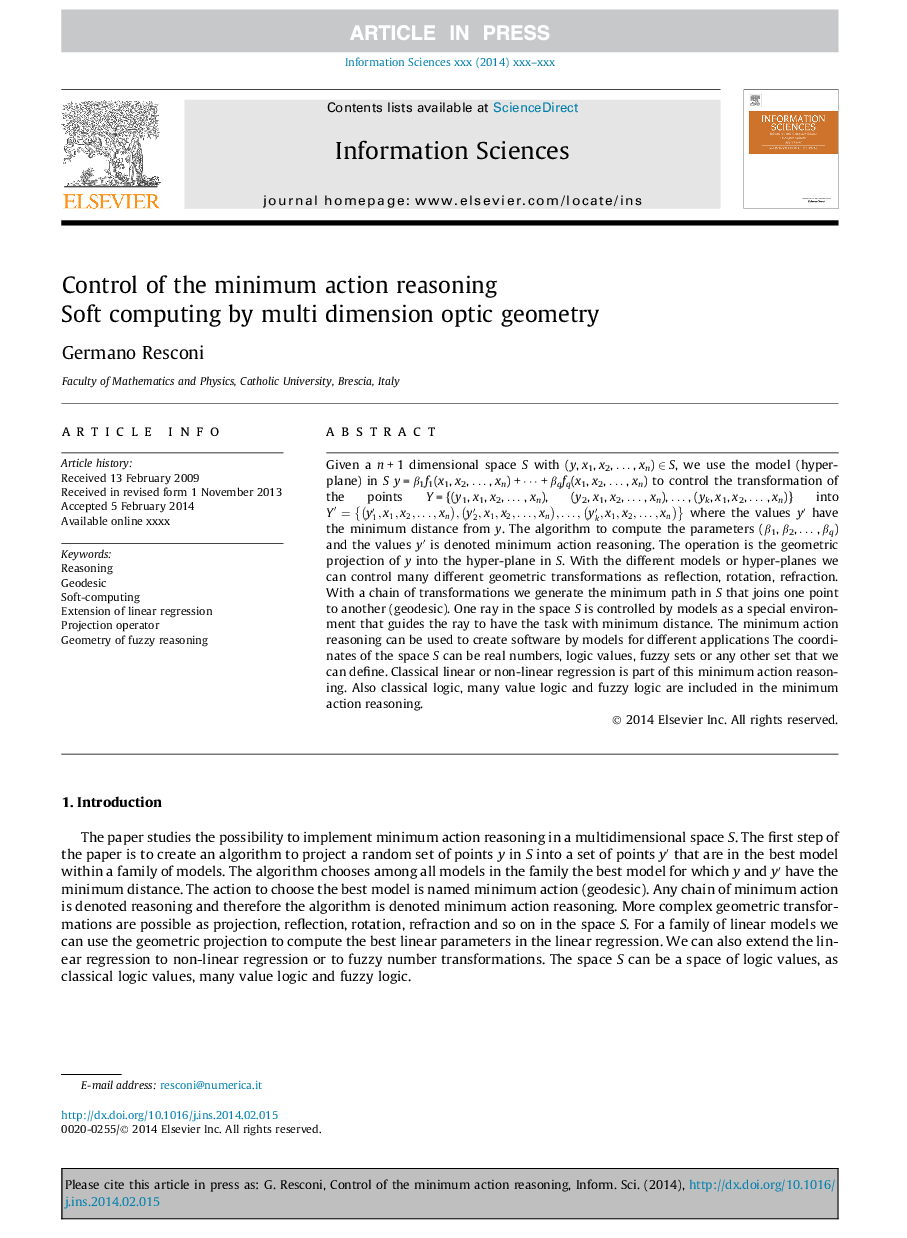| Article ID | Journal | Published Year | Pages | File Type |
|---|---|---|---|---|
| 6858007 | Information Sciences | 2017 | 25 Pages |
Abstract
Given a n + 1 dimensional space S with (y, x1, x2, â¦Â , xn) â S, we use the model (hyper-plane) in S y = β1f1(x1, x2, â¦Â , xn) + â¯Â + βqfq(x1, x2, â¦Â , xn) to control the transformation of the points Y = {(y1, x1, x2, â¦Â , xn), (y2, x1, x2, â¦Â , xn), â¦Â , (yk, x1, x2, â¦Â , xn)} into Yâ²=y1â²,x1,x2,â¦,xn,y2â²,x1,x2,â¦,xn,â¦,ykâ²,x1,x2,â¦,xn where the values yâ² have the minimum distance from y. The algorithm to compute the parameters (β1, β2, â¦Â , βq) and the values yâ² is denoted minimum action reasoning. The operation is the geometric projection of y into the hyper-plane in S. With the different models or hyper-planes we can control many different geometric transformations as reflection, rotation, refraction. With a chain of transformations we generate the minimum path in S that joins one point to another (geodesic). One ray in the space S is controlled by models as a special environment that guides the ray to have the task with minimum distance. The minimum action reasoning can be used to create software by models for different applications The coordinates of the space S can be real numbers, logic values, fuzzy sets or any other set that we can define. Classical linear or non-linear regression is part of this minimum action reasoning. Also classical logic, many value logic and fuzzy logic are included in the minimum action reasoning.
Related Topics
Physical Sciences and Engineering
Computer Science
Artificial Intelligence
Authors
Germano Resconi,
